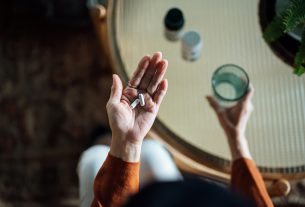Civilians, soldiers and other security personnel who suffered skin damage and scarring from cuts and burns need to be treated effectivity as soon as possible because research shows that when performed on fresh wounds and lacerations, repair is most effective.
One of the handful of Israeli expert dermatologists who has for decades been using lasers to repair skin damage has opened a free service called the Scar Treatment and Rehabilitation (STAR) and to enlist other dermatologists in the country who have such expertise to join the effort.
Emergency treatment crucial to saving skin
Dr. David Friedman, a former assistant Professor of Dermatology at Brown University in Rhode Island and presently a US- and Israel-Board-Certified dermatologist in Jerusalem and Ramat Aviv is STAR’s founder.
He is offering – at no cost to the victims of the war – state-of-the-art laser treatments and advanced skin-care management, performed by himself at his two offices or elsewhere if qualified dermatologists decided to join.
“Primarily, there are two types of lasers for scars – fractionated carbon dioxide (CO2) or fractionated erbium,” Friedman told The Jerusalem Post in an interview. They are the mainstay of lasers for traumatic and burn scars. The first thing I do when I look at a scar is to study its color. If it’s red, I use a pulse-dye laser. If it’s brown, I use a pico laser, and if it’s white, I use an excimer.”
Fractional CO2 lasers are used by dermatologists or plastic surgeons to reduce the appearance of acne scars, deep wrinkles, and other skin irregularities. It is a non-invasive procedure that uses laser made of carbon dioxide to remove the outer layers of damaged skin.
Fractionated Erbium: YAG lasers create tiny “channels” in the skin, triggering the wound-healing response and stimulating the activity of fibroblasts that leads to the production of new collagen and elastin.
Pico lasers are among the most advanced laser treatments currently available on the market. It delivers noticeable, permanent results in fewer sessions than comparable options and is safe, requires minimal downtime, and can be used across the entire face and body. The technology makes possible quick, effective, and highly selective treatment of pigmented lesions and tattoos. It also enhances elastin production in the skin, resulting in a softer, fuller, more youthful complexion. The device sends ultra-short pulses of energy without heat to scars or tattoos, eliminating the problem skin pigment or particles, and these are then eliminated naturally by the body. They are used for hyperpigmented scars.
Excimer lasers are a family of high-pressure, pulsed gas lasers that produce powerful ultraviolet light with high efficiency and high power at several useful wavelengths. The source of the emission is a fast electrical discharge in a high-pressure mixture of a rare gas and a halogen gas. They are used for hypopigmented scars.
Then, continued Friedman, he performs fractionated resurfacing with the CO2 or erbium, depending on whether the scar is elevated or depressed.
If elevated, he rubs in steroid cream; if depressed, he uses collagen and applies a biostimulator that produces collagen.
While rehabilitation of scars does not produce perfect results, the improvement is very significant, said the dermatologist, who often uses his lasers to remove Christian symbols from the foreheads of Ethiopian immigrants.
The average case needs three to five treatments of between 30 seconds to 30 minutes, depending on size. If it’s whole back, Friedman said, “it can take half an hour each time. It’s a bit uncomfortable but bearable. After the treatment, he said, he prescribes creams.
“An Egoz soldier I treated who was wounded has gone back to his unit. also treated a soldier who lost an eye and had a resulting esthetic problem. I have treated people who were scarred decades ago – there was a 20-year-old woman who was a small child – a victim of a bus bomb near the Western Wall – who asked me to treat her. Another patient was a woman in the Border Police who had been run over.” If the National Insurance Institute or the defense authorities don’t pay for such treatment, Friedman provides it free.
“I see so many patients interviewed on TV who would really benefit from laser treatment – not only esthetically but also functionally. Hospitals save their lives, but esthetic and functional problems are lifelong.”
Prof. Daniel Cassuto, a Jerusalem plastic surgeon who works privately and is qualified for laser treatment has just told him he has agreed to join the STAR Project. “We want to serve as a clearing house to help those with wounds and scars.
Patients who wish to participate in the STAR project should send a Whatsapp message that includes a picture of the scar and a copy of the hospital-discharge report to WhatsApp 058-563-5673.
Doctors who wish to contribute to the care of those wounded in the war by joining the STAR Project and providing free dermatologic treatments in their own clinics or hospitals should contact Daniella by calling (02) 563-5673.



